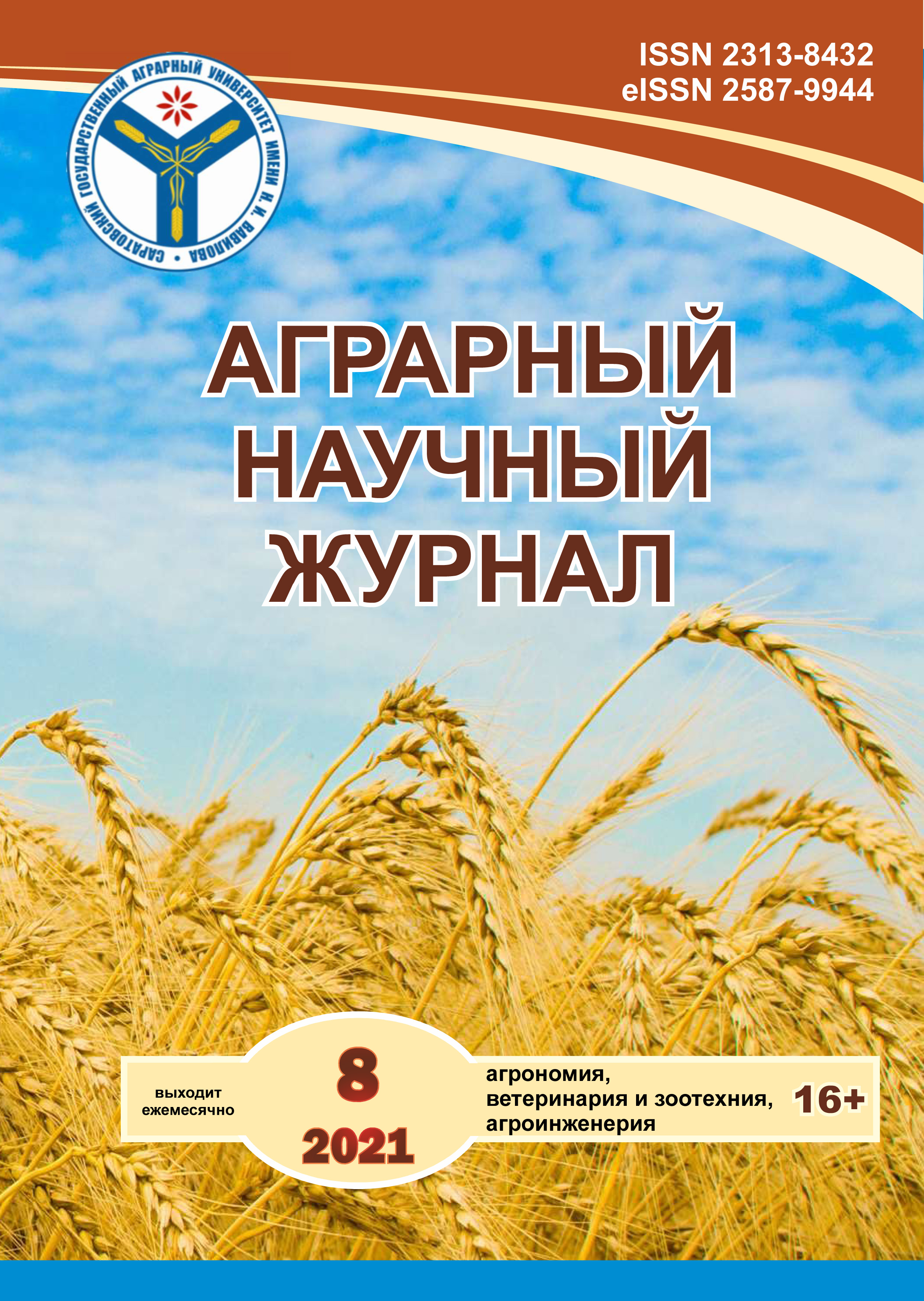The influence of agro-climatic conditions on the fatty acid composition of soybeans of the northern ecotype
DOI:
https://doi.org/10.28983/asj.y2021i8pp9-12Keywords:
Glycine max (L.) Merr., varieties, yield, fat, fatty acidsAbstract
In terms of biological value and quality, soy fat meets the standard of the Food and Agriculture Organization of the United Nations and the World Health Organization. The aim of the study was to identify agro-climatic factors that affect the fatty acid composition of soybean seeds of the northern ecotype and to determine the variety that most corresponds to the group of food fat quality. Field experiments were conducted in 2017–2019 in the Ryazan region at the experimental base of the Institute of Seed Production and Agricultural Technologies-a branch of the FGBNU FNAC VIM. Varieties and forms of soybeans of the northern ecotype – Light, Mageva, Okskaya and M-52-were selected as objects of research. The results of the study. The average yield of soybean seeds for three years of research was from 1.81 to 2.57 t / ha for varieties, the fat content in the seeds was 19.4–21.5 %, the total harvest was 357–548 kg/ha. The fat of soybean seeds of varieties and forms of the northern ecotype contained 11.36–11.43 % palmitic acid and significantly less oleic acid-7.43–11.27 %. While in traditional varieties, the values of these indicators were 9.75 % and 24.80 %, respectively. In conditions of sufficient moisture (2017), the predominance of saturated palmitic acid in the fatty acid composition of seeds was observed, and in dry years (2018–2019) – unsaturated fatty acids – oleic, linoleic and linolenic, their sum was 73 % in dry years, with sufficient moisture – 67 %. Better illumination of the upper tiers of plants contributed to the activation of the synthesis of unsaturated fatty acids. It was found that, according to the fatty acid composition, the Light soy variety is more close to the varieties of soy for food purposes.
Downloads
References
Белышкина М.Е., Кобозева Т.П., Шевченко В.А., Делаев У.А. Влияние норм высева и способов посева на урожайность и качество семян раннеспелых сортов и форм сои северного экотипа // Известия Тимирязевской сельскохозяйственной академии. 2018. № 4. С. 182–190.
Влияние погодно-климатических условий на содержание белка и масла в семенах сои на Северном Кавказе / Л.Ю. Новикова, И.В. Сеферова, А.Ю. Некрасов и др. // Вавиловский журнал генетики и селекции. 2018. Т. 22. № 6. С. 708–715.
Гатаулина Г.Г., Белышкина М.Е. Рост и развитие раннеспелых сортов сои при разных сроках посева в Московской области // Кормопроизводство. 2012. № 3. С. 26–28.
Дорохов А.С., Белышкина М.Е., Большева К.К. Производство сои в Российской Федерации: основные тенденции и перспективы развития // Вестник Ульяновской государственной сельскохозяйственной академии. 2019. № 3 (47). С. 25–33.
Зайцев Н.И., Бочкарев Н.И., Зеленцов С.В. Перспективы и направления селекции сои в России в условиях реализации национальной стратегии импортозамещения // Масличные культуры: Научно-технический бюллетень Всероссийского научно-исследовательского института масличных культур. 2016. Вып. 2 (166). С. 3–11.
Некрасов А.Ю. Соя: источники из коллекции генетических ресурсов ВИР // Труды по прикладной ботанике, генетике и селекции. 2020. Т. 181. № 1. С. 48–52.
Петибская В.С. Соя: химический состав и использование. Майкоп: ОАО «Полиграф Юг», 2012. 432 с.
Сеферова И.В., Мисюрина Т.В., Никишкина М.А. Эколого-географическая оценка биологического потенциала скороспелых сортов и осеверение сои // Сельскохозяйственная биология. 2007. № 5. С. 42–47.
Синеговская В.Т., Наумченко Е.Т., Кобозева Т.П. Методы исследований в полевых опытах с соей. Благовещенск: ФГБНУ «Всероссийский НИИ сои», 2016. 116 с.
Чекмарев П.А., Артюхов А.И. Рациональные подходы к решению проблемы белка в России // Достижения науки и техники АПК. 2011. № 6. С. 5–8.
Jumrani K., Bhatia V.S. Interactive effect of temperature and water stress on physiological and biochemical processes in soybean // Physiology and Molecular Biology of Plants. 2019. Vol. 25. No. 3. Р. 667–681.
Downloads
Published
Issue
Section
License
Copyright (c) 2021 The Agrarian Scientific Journal

This work is licensed under a Creative Commons Attribution-NonCommercial 4.0 International License.








